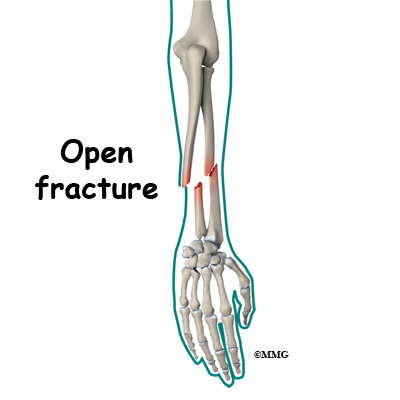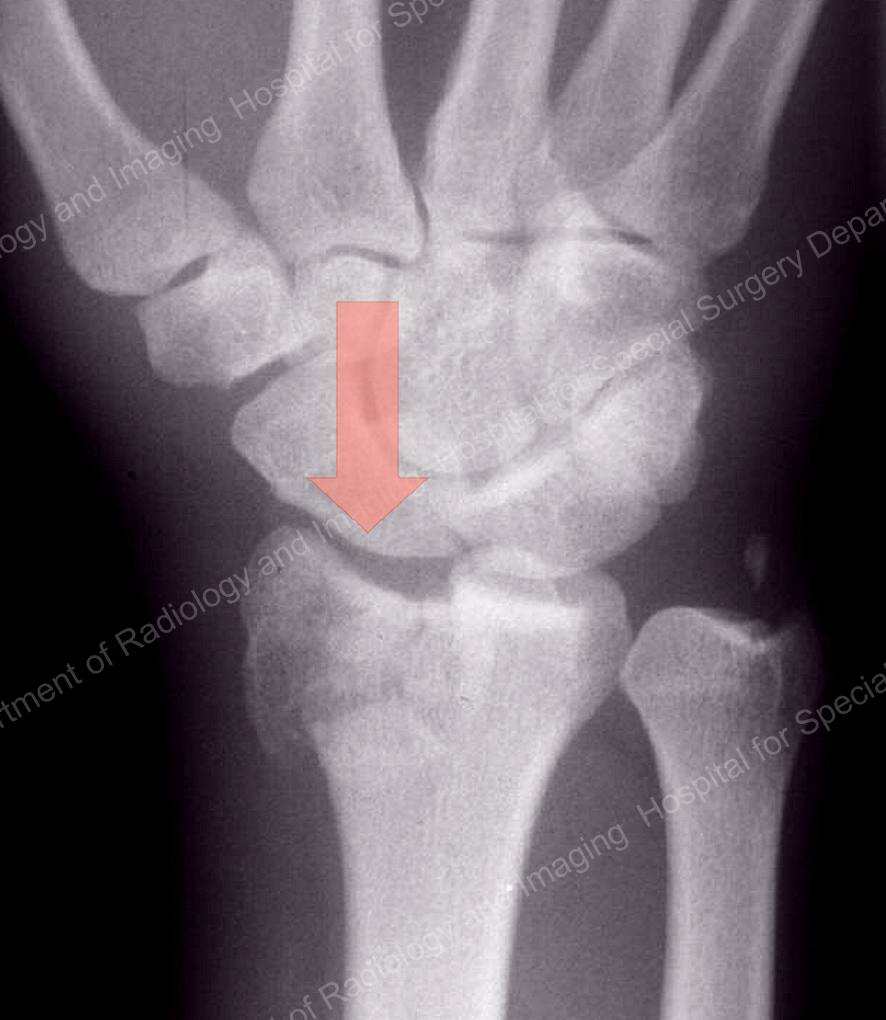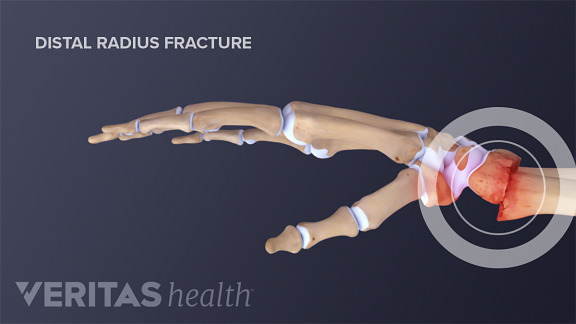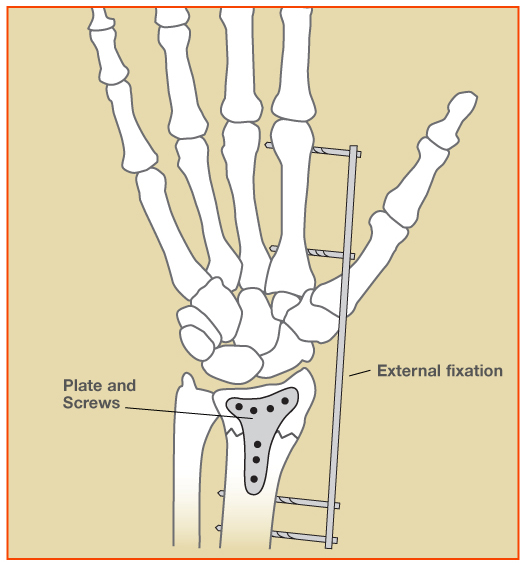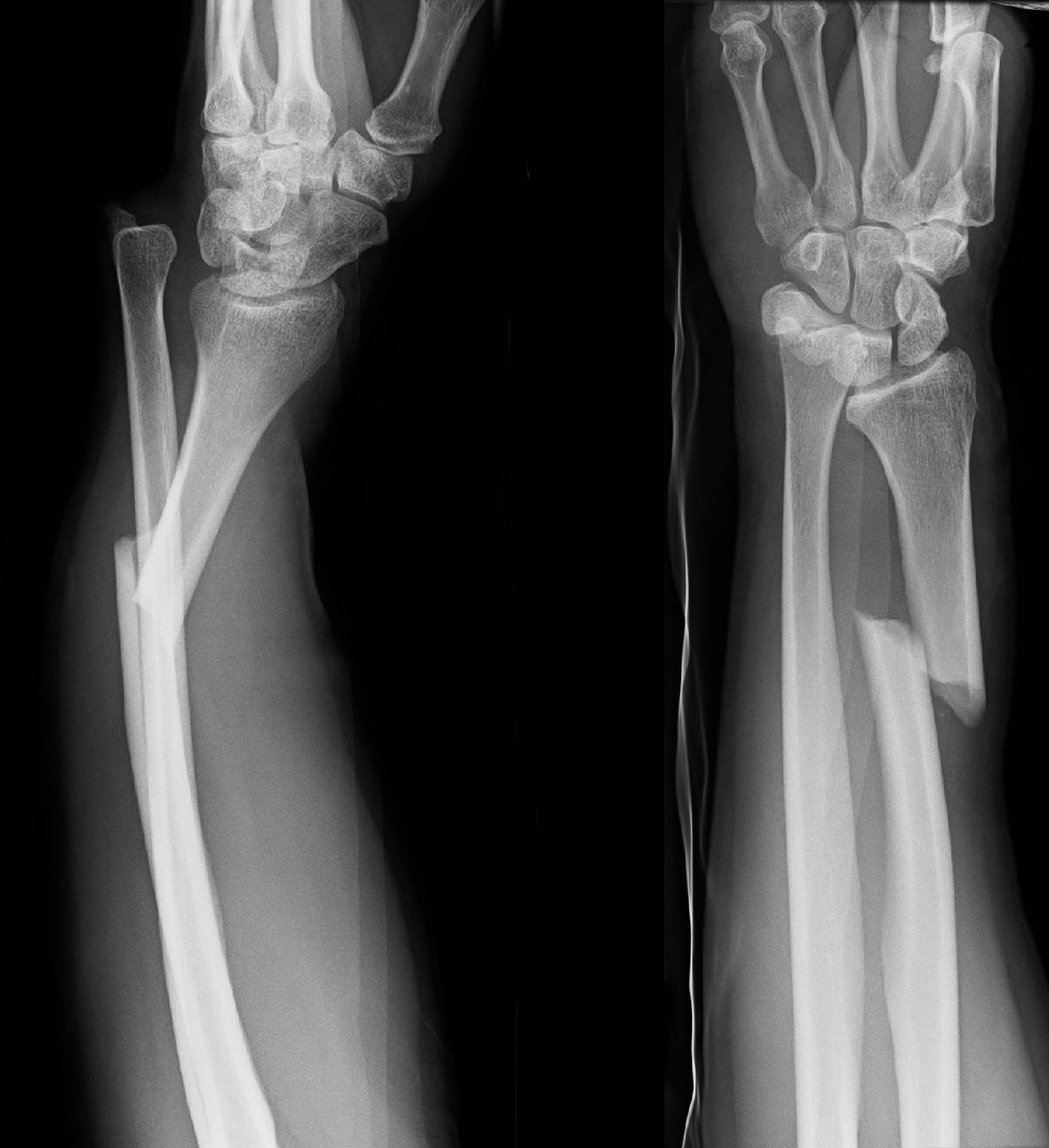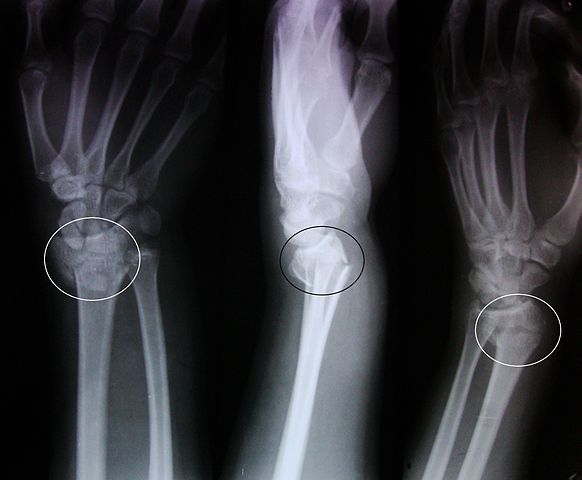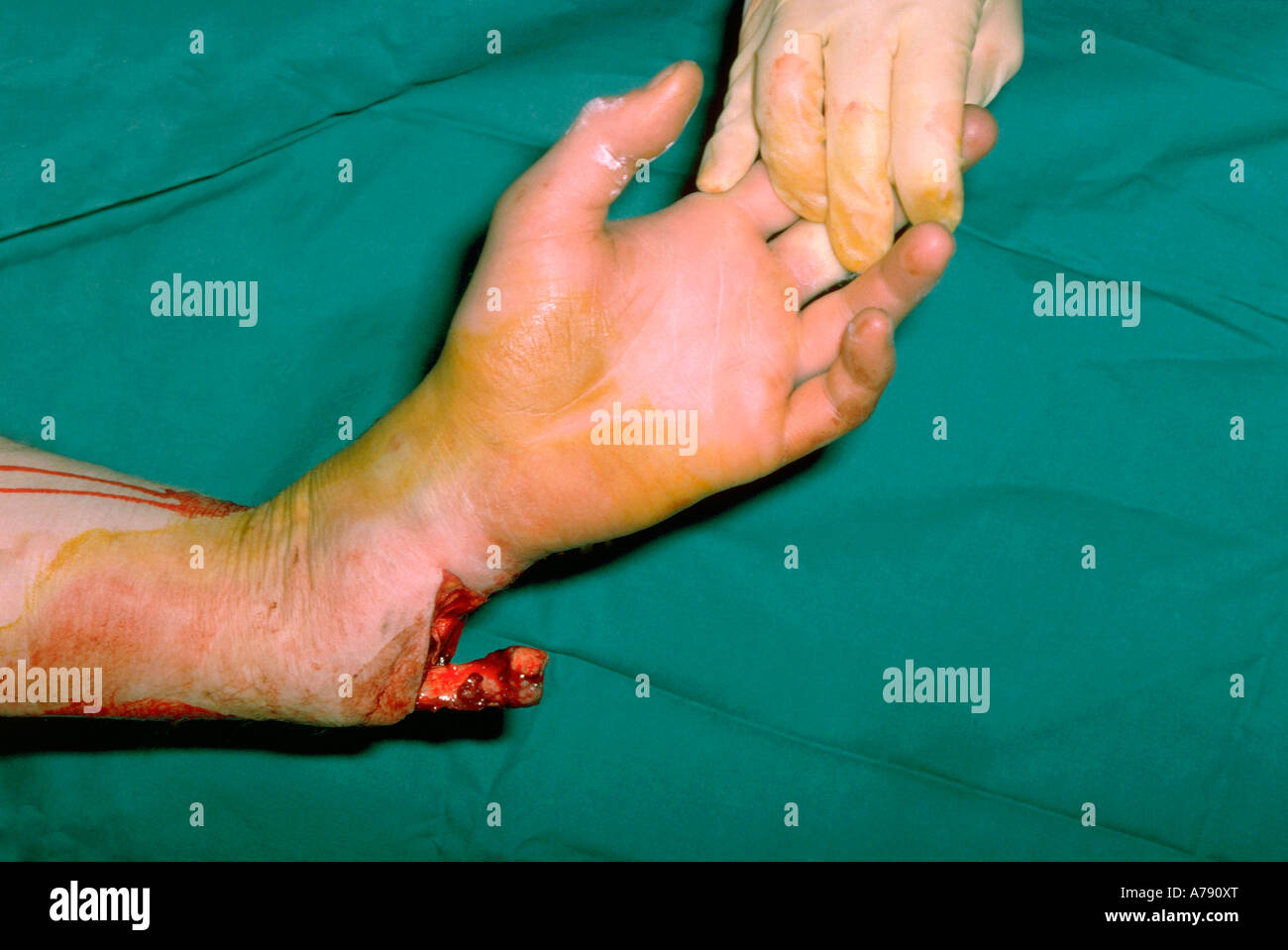Compound Fracture Radius

Some of the causes include falls on the forearm or outstretched arm and direct impact from an object to the forearm.
Compound fracture radius. These specific symptoms herald the onset of life threatening complications or long term consequences and so indicate a transfer to the er of a multi speciality hospital at the earliest. What you need to know. Certain warning signs and symptoms are to be kept in mind when dealing with compound fractures. Falling from standing height.
As the severity of the open fracture increases the likelihood of complications and the length of time for healing also increases proportionally. Compound fracture of the wrist is a type of fracture which is usually caused due to a traumatic injury because of which the wrist bone breaks in such a way that it juts out of the skin for example if a pedestrian is struck by a moving car on the foot then the bone may penetrate through the wound caused by the injury and can be seen through the naked eye. These bones must each be approached through a separate incision therefore you will have two incisions on your forearm. It may be caused by trauma twisting due to muscle spasm or indirect loss of leverage or by disease that results in osteopenia.
Studies have shown that it accounts for up to 25 of fractures in children and about 20 of fractures in older adults. The radius is the larger of the two bones of the forearm. Ulna and radius fractures. The breaking of a part especially a bone.
Immediate first aid consists of splinting the bone with no attempt to. One of the most common and painful forearm fractures i see is the distal radius fracture. They affect your ulnar styloid process a bony projection that helps attach your hand to your arm. When it comes to frequency the radius is the arm bone folks are most likely to break.
A broken wrist specifically a distal radius fracture is one of the most commonly experienced fractures in the body. Fracture of the distal radius can occur with injuries that exert much less force e g. A forearm fracture can occur in one or both of the forearm bones. Pathophysiology force applied longitudinally or obliquely to the hand and wrist is absorbed by the distal radius because it is the load bearing bone in the forearm.
The end toward the wrist is called the distal end hence the term distal radius fracture. Symptoms of compound fractures are mainly due to the open wound and the broken bones within the wound. A break in continuity of bone. The wrist is a complicated joint and there are several potential ways its bones can be fractured or displaced.
The forearm is made up of two bones the ulna and the radius. We ll go over what tends to cause. Ulnar styloid fractures often accompany a radius fracture.
